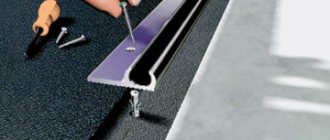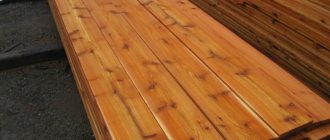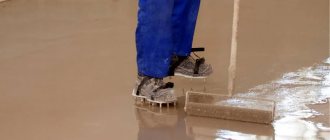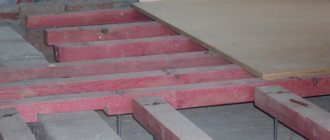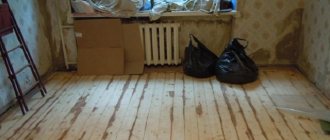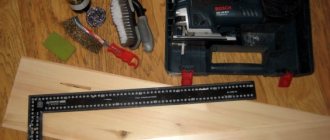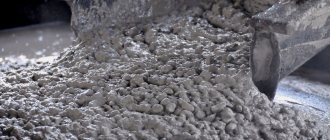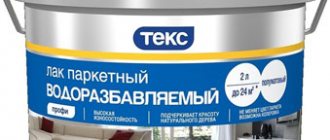Not everyone can afford mahogany or oak parquet. But this is not a reason to deny yourself the contemplation of noble shades. It doesn’t matter what your parquet is made of - tinting will help it “repaint” the most expensive types of wood. For this, there are special tinting compounds - stains, with which you can give wood any color. As a rule, this is the color of a more expensive, elite breed. What tinting liquids are called stains? By what characteristics are they chosen and how are they applied to a wooden surface? Read about all this below.
- 2 Types of stains: selecting the right composition
- 3 Which color should I choose?
- 4 What is the best way to apply stain?
- 5 Preparatory stage: making a color sample
- 6 Surface treatment before work
- 7 Step-by-step dyeing technology
- 8 Video example of working with a solid board
What is stain and why is it needed?
Stain is a tinting liquid that is used to give wood a shade that is not typical for it. Penetrating into the structure of the wood, the stain stains it without forming a film on the surface. In other words, the wood texture remains visible, only its color changes. Due to this, the pine floor can be given a visual resemblance to walnut or oak parquet. Naturally, this similarity will only be external! The remaining characteristics of the rock (resistance to decay, hardness, strength) will remain unchanged.
Advantages and disadvantages of paint
They are: alkyd, acrylic, polymer (high water repellency);
Alkyds are the most popular due to their increased hydrophobicity:
- excellent vapor permeability;
- withstand moisture;
- wide color palette;
- low price.
Acrylic - quick-drying, perfectly covers the material, odorless, environmentally friendly . The advantage of such paint and varnish products is their increased fire safety. Good adhesion to many materials (chipboard, MDF). They have antiseptic additives. Cons: price and high consumption.
Minuses
- many of them are toxic and smelly;
- fire hazardous;
- not durable, need to be renewed from time to time (remove the bottom layer);
- the structure of the tree is not visible (important for many).
By painting with this product, you get a high-quality color coating. It differs from other types of painting in that it has excellent coverage, is resistant to fading, has a pleasant appearance, and the surface being treated is pleasant to the touch.
Remember! Due to the large variety, you can choose the necessary paint: inside, outside, floor, walls, minus, plus temperature, etc.
Types of stains: selecting the right composition
Modern stain impregnations can be completely different in composition. Depending on the “content”, they are divided into:
- aquatic;
- alcohol;
- oil;
- nitromordants.
Let's take a closer look at each option.
1. Water-based stains are the most common; they allow you to paint wood in any tone: from the lightest “pine” shade to dark mahogany. Such stains are sold in two forms: liquid and dry. Liquid water stains are ready to use immediately, while dry powders require preliminary dilution with warm water.
Water stains have virtually no odor and this is a huge plus when it is necessary to stain wood indoors. But they take a long time to dry - about 12-14 hours. In addition, water-based stains have the ability to raise the wood pile during the painting process, which leads to the need for subsequent sanding.
Among water-based stains, acrylic stains, made on the basis of acrylic resins, are a separate group. They are resistant to fading and are not washed out by water, raising wood fibers less. Their disadvantage is their high price.
2. Alcohol stains are solutions of various aniline dyes in alcohol (denatured alcohol). After applying the stain, the coloring pigments quickly penetrate the wood texture, and the alcohol evaporates. The alcohol stain dries completely in 15-30 minutes. Therefore, it must be applied quickly to avoid stains and washouts. Uniform coloring using alcohol stain is obtained by spraying it from a spray gun.
3. Nitro stains – solvent-based stains. In their specificity, they are similar to alcohol stains. Requires quick application, preferably using sprayers.
4. Oil stains - solutions of dyes in oil (most often linseed). They apply evenly and easily and do not lift fibers. The coloring pigments of oil stains have high light resistance, so surfaces painted with them do not change their brightness for many years and retain their original appearance.
When applying oil stain, you can use a spray gun, a wide brush, or a rag. Drying of oil stains usually takes 2-4 hours.
Popular manufacturers
Today there are a large number of stains from different manufacturers on the market. It is difficult to choose the best: many products are of excellent quality and have a reasonable price. You can buy stains at any hardware store: IKEA, Maxidom, Leroy Merlin and others. The selection of a good stain for woodwork can be done from the following list:
- "Novbytkhim" (NBH). Water-based, odorless stain that forms an abrasion-resistant coating. Helps to tint doors, baseboards, railings, trim, boards and other products. It has a rich palette of shades and can be used in decoupage.
- Coswick Wood Stain. Alcohol stain for tinting and protecting wooden bases. Helps to repair minor scratches, chips, and finish edges when installing parquet. Combines perfectly with varnishes.
- "Rainbow 21". Acrylic stain contains special substances to protect against mold and wood-destroying fungi. Has a high degree of adhesion to all types of wood.
- Zar. A quick-drying composition for interior and exterior work, with a self-leveling structure. Apply to wood without stains or streaks.
- Tikkurila Pirtti (Tikkurila Pirtti). A colorless stain that can be tinted according to the Tikkurila pigment catalog in absolutely any color: mocha, antique, villa and others (36 glaze shades).
- Liberon. It is used for the restoration and protection of wooden surfaces, suitable for indoor and outdoor work. The product is resistant to UV radiation.
- Varathane (“Varatan”). Oil stain made from transparent soybean oil, has pure natural shades, and is characterized by deep penetration into the wood.
- Zerwood. Stain is water-based and comes in many colors to match noble types of wood.
- Minwax (“Minwax”). Oil impregnation, which gives beautiful shades to wood and protects products from water and ultraviolet radiation.
- Pinotex Interior (“Pinotex Interior”). Water-based decorative impregnation is widely used for finishing work and protecting wood from external factors.
- "Krafor". The product is used on products used inside and outside buildings. The finished coating is highly polished and does not require varnish.
- "Biotex Universal". Antiseptic impregnation, highlights the wood structure, gives a beautiful shade, extends service life.
- "Vertex". A popular inexpensive water stain that comes in a wide range of shades: rosewood, ebony, beech, walnut and many others.
- Tury. A wood-protective stain that produces an attractive matte finish. Emphasizes the structure of wood, protects against microorganisms.
- Renner. Concentrated product with an emphasizing effect, water-soluble, has 17 basic shades.
- "Latek". Used to highlight wood fibers. Does not fade under the influence of light, is applied evenly, and has high moisture resistance.
- "Belinka". A wax-based wood coating designed for long-term protection of wood from any external factors.
- Herlac. A line of environmentally friendly stains without harmful components. Can be used for any joinery, chipboard, lining, veneer.
Which color should I choose?
Each stain color according to the international classification has its own code. And the name corresponding to the type of wood, the color of which is imitated by the stain. For example, “Mahogany”, “Oak” or “Plum” stain. But choosing impregnation only by name or picture on the label is unwise. You can get unpredictable results. There are reasons for this:
- The colors of stains of the same code, but from different manufacturers, can differ significantly in shades. For example, the water stain “Larch” has a pinkish-brown color, and the same “Larch” differs from “Novbytkhim” in a soft yellow tint. Many stores display sample dies painted with different stains. Samples will more accurately convey the actual color of the stain than the picture on the label.
- The appearance of painted wood is significantly influenced by its characteristics - natural color, density, structure. For example, stain on mahogany will look darker than on maple (provided the same tone of stain is used). This is due to the fact that mahogany wood itself is a darker shade.
The same experiment with maple and pine samples will show that pine wood stains more intensely and faster. Pine is softer and more porous, while maple is dense and hard. Therefore, it is easier for coloring pigments to penetrate into pine wood.
The degree of staining also depends on the texture of the wood. Oak with a pronounced texture quickly darkens from staining due to the fact that coloring pigments penetrate into the recesses of the veins. The main part of oak wood (outside the veins) stains less quickly and intensely.
What is the best way to apply stain?
To apply stains you can use: a spray gun (with a nozzle size of no more than 1.5 mm), a wide brush (100 mm wide), a foam swab, and rags. If you have a large area to cover, then you should definitely prefer a spray gun. It is also used when using nitro stains and alcohol stains. They dry too quickly, so when applied with brushes or swabs, stains often form on the wooden surface.
Water-based and oil-based stains can be applied well with brushes, swabs and rags. Brushes with natural bristles are more suitable for oil-based stains, while those with synthetic bristles are more suitable for water-soluble stains. The bristles should be strong and not leave behind hairs on the surface.
Fabrics and tampons used for stains can be cotton or foam rubber. They should also not “sprinkle” with lint and threads, which can remain on an already painted surface and reduce the quality of the coating.
Preparatory stage: making a color sample
After purchasing the stain, but before starting the actual painting, it is advisable to make a color sample (test paint). It is necessary to understand whether a given stain is suitable for a particular surface, to identify the final color and determine the number of layers of paint required.
To make a color test, use a board that has been treated (sanded, sanded) in the same way as the wooden surface to be painted. Naturally, the type of wood of the sample board should also coincide with the main surface.
The board is covered with stain in one layer. After drying, the second layer is applied to 2/3 of the sample. The third layer paints another 1/3. The dried stain is covered with two layers of varnish. By comparing the color intensity of each part of the sample, choose the number of layers that is most suitable for a particular surface.
To choose the most optimal option, several test colors are often done. To do this, several boards are coated with different stains. Then they make a choice.
Cons of varnish
- priming (protection from microbes and adverse effects of weather conditions);
- grinding;
- long drying.
Equally important! Basically, varnishes are toxic and negatively affect a person’s well-being (cause headaches).
- the need to apply at least two layers;
- the smell of varnish can last a long time;
- little cover.
Varnishes based on water are the safest.
Surface treatment before work
Before applying stain, the wood surface must be prepared. They do this in stages:
1. Remove the old coating (if any). To do this, scrape and polish the boards. In addition to removing the old coating, these procedures will level the floor surface.
2. Clean the surface from grease and oil stains by wiping problem areas with a rag soaked in white spirit or gasoline.
3. It is advisable to deresin coniferous species before applying stain. That is, remove resin from the wood structure, which can interfere with the absorption of the stain. Solutions for degumming are prepared according to the following “recipes”:
- 50 g of potassium carbonate and 60 g of soda ash are dissolved in 1 liter of water heated to 60˚C.
- Dissolve 50 g of caustic soda in 1 liter of warm (soft) water. Treat the surface with the resulting 5% soda solution.
- Mix 750 ml of distilled water with 250 g of acetone.
Any of these solutions is generously applied to the boards, preferably in several layers. After half an hour, wipe the surface with a cotton cloth and rinse with warm water.
Step-by-step dyeing technology
Despite the multiple preparatory steps, the direct process of applying stain is not at all complicated. It is performed according to the following scheme:
1. The stain is heated a little to increase the degree of penetration into the wood.
2. A swab, rag or brush is soaked in stain. Strong moisture should not be allowed, otherwise drips and uneven coloring will inevitably occur. When using a sprayer, pour the stain into the tank.
3. Apply stain along the wood fibers. They try to work quickly, without interruptions, to avoid stains. When streaks form, wipe the surface with a soft cloth, “pulling” excess liquid along the fibers. Leave the stain until completely dry.
4. In a similar way, apply several more layers to obtain the desired shade (usually 2-3 layers).
5. Finally, the stain-painted surface is varnished in several layers, sanding each intermediate layer with fine-grained sandpaper.
How to choose an effective set of materials for wood: secrets that manufacturers are silent about
But there is another problem: most often, one remedy is not enough: it is almost impossible to contain solutions to all problems in one jar. Often a combination of primer plus stain, or tinting agent plus varnish is required. How to choose this complex so that the products complement each other, and each of them is truly effective? Again, think about what properties you want to give to the wood, and based on this, choose each material carefully.
What a primer for wood should be: 4 main parameters
A primer for wood should first of all be an antiseptic primer. That is, perform 2 main functions.
1. As a primer, it should guarantee adhesion (good adhesion) of the finishing layers to the base so that they hold tighter and their service life will increase, and it should also equalize the absorbency of the base, thanks to which you will save on the consumption of finishing materials and get a uniform color of the surface;
2. As an antiseptic, the primer should, penetrating deeply into the wood, protect the tree from the development of a) fungi and b) insect pests (this function is important only for wet rooms or outdoors; in a dry room you can completely do without an antiseptic).
In addition, an antiseptic primer for wood should:
3. be indelible - otherwise it will instantly be useless on the street and in damp rooms, it will simply be washed off;
4. be non-evaporating - otherwise it will not only quickly lose its properties, but will pose a threat to your health as soon as you use it somewhere indoors.
Moreover, a high-quality primer must meet all four of these parameters. It's sad that half of the brands on the market don't pass this simple test.
7 signs of high-quality glaze (impregnation)
Azure coatings are applied to wood for protection, as well as to give it a certain color or shade. It is important to consider the following.
- Glaze (or impregnation with the properties of azure) should create a very thin film, because this is its advantage: the structure of the wood will remain visible, and over time the surface will not swell, as happens with conventional paints.
- The azure must be safe, especially if you plan to use it inside the house. Read the ingredients carefully: Bea, for example, indicates on jars of antiseptics the composition down to the last component - you can check each one by finding its description on the Internet using the GAS code.
- The azure should not contain antiseptics - it is harmful! According to sanitary standards, their use is allowed only in soils that will later be covered with a finishing coating.
- The best binder for wood materials is alkyd resins. Acrylic compounds are much less effective due to the large size of the acrylic molecules: they simply cannot penetrate deep enough into the wood. You can thoroughly saturate wood with useful substances only with an alkyd resin product!
- The azure must be vapor permeable. Simply put: moisture that penetrates into the wood must be able to easily escape, otherwise the decorative surface will crack.
- The azure must be elastic: wood is a living material that transforms from various factors, and the azure must “move” with it without warping.
- Low consumption (1 liter per 8-12 sq. m. with a three-layer application) is in itself a huge advantage and an opportunity for savings. Low consumption also indicates the use of high-quality fatty resins.
What should a quality wood oil look like?
When choosing wood oils, you should pay attention to the following points.
- Reliable protection without changing the natural appearance: the oil must deeply penetrate the wood, creating a smooth surface, preserving the natural color and beautiful structure of the wood.
- Water-repellent effect, which is especially important for wood outdoors, as well as used in rooms where there is moisture.
- The oil should not form a film on the surface, thereby it does not clog the pores, the surface remains vapor-permeable.
- Safety for humans must be absolute, because oils are also used for kitchen utensils and children's toys.
- Natural: the composition may include mineral oils and some additives, but the main component is always natural oil.
Should oil give color to wood? Technically, this is possible, but to do this, you need to add other components to it that reduce the important properties of the oil; as a result, such a substance can no longer be called oil, it is more like an impregnation.
Important: if you want to add color to wood, it would be better to use not oil, but colored azures or, for example, tinted varnishes. After all, oil impregnation was invented as the most natural, non-altering way to treat wood.
Now you have ready-made lists of important qualities that you should ask the seller about before purchasing wood product. Use them and no one will be able to sell you useless material anymore. Be careful and patient!
